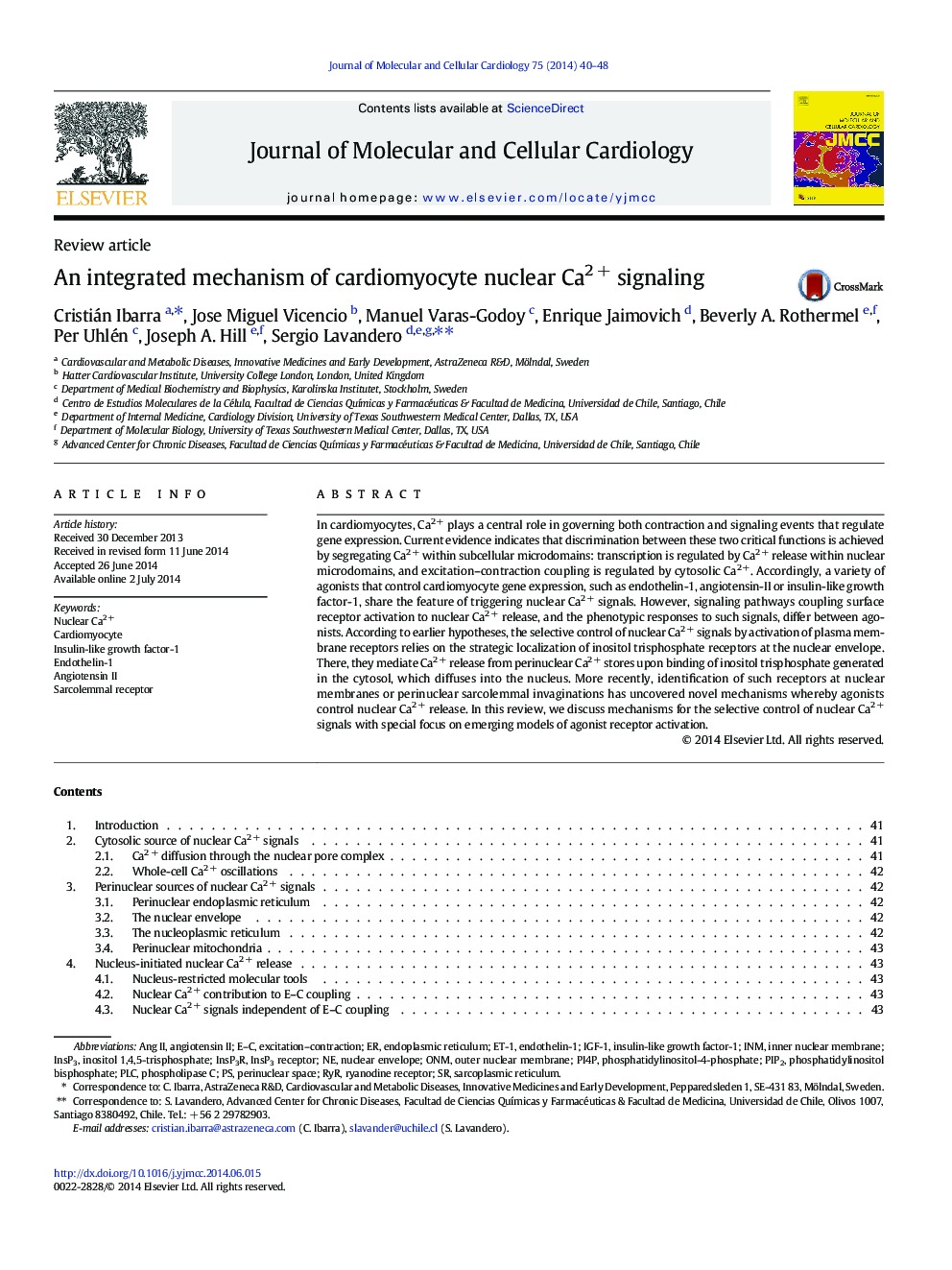| Article ID | Journal | Published Year | Pages | File Type |
|---|---|---|---|---|
| 8474658 | Journal of Molecular and Cellular Cardiology | 2014 | 9 Pages |
Abstract
In cardiomyocytes, Ca2Â + plays a central role in governing both contraction and signaling events that regulate gene expression. Current evidence indicates that discrimination between these two critical functions is achieved by segregating Ca2Â + within subcellular microdomains: transcription is regulated by Ca2Â + release within nuclear microdomains, and excitation-contraction coupling is regulated by cytosolic Ca2Â +. Accordingly, a variety of agonists that control cardiomyocyte gene expression, such as endothelin-1, angiotensin-II or insulin-like growth factor-1, share the feature of triggering nuclear Ca2Â + signals. However, signaling pathways coupling surface receptor activation to nuclear Ca2Â + release, and the phenotypic responses to such signals, differ between agonists. According to earlier hypotheses, the selective control of nuclear Ca2Â + signals by activation of plasma membrane receptors relies on the strategic localization of inositol trisphosphate receptors at the nuclear envelope. There, they mediate Ca2Â + release from perinuclear Ca2Â + stores upon binding of inositol trisphosphate generated in the cytosol, which diffuses into the nucleus. More recently, identification of such receptors at nuclear membranes or perinuclear sarcolemmal invaginations has uncovered novel mechanisms whereby agonists control nuclear Ca2Â + release. In this review, we discuss mechanisms for the selective control of nuclear Ca2Â + signals with special focus on emerging models of agonist receptor activation.
Keywords
E–CONMPhosphatidylinositol-4-phosphatePI4PIGF-1INMET-1InsP3PLCInsP3RRyRPIP2inositol 1,4,5-trisphosphateAngiotensin IIendothelin-1insulin-like growth factor-1excitation–contractionAng IISarcoplasmic reticulumendoplasmic reticulumOuter nuclear membraneInner nuclear membranephosphatidylinositol bisphosphatephospholipase CCardiomyocytenuclear envelopeInsP3 receptorRyanodine receptor
Related Topics
Life Sciences
Biochemistry, Genetics and Molecular Biology
Cell Biology
Authors
Cristián Ibarra, Jose Miguel Vicencio, Manuel Varas-Godoy, Enrique Jaimovich, Beverly A. Rothermel, Per Uhlén, Joseph A. Hill, Sergio Lavandero,
